Feathers are more than just “fur” for birds.

A. (Andrew Leach/Cornell Lab of Ornithology)

B. (Andrew Leach/Cornell Lab of Ornithology)

C. (Andrew Leach/Cornell Lab of Ornithology)
- Light as a feather? Not necessarily. The bones of birds that fly are mostly hollow to help them stay aloft. In most birds, the total weight of its feathers is greater than that of its skeleton.
- Feather-saurus: Today, birds are the only animals with feathers, but that wasn’t always true. Paleontologists studying fossils have discovered that some dinosaurs probably had feathers, including the Tyrannosaurus rex.
- The skinny on feather muscles: A bird’s skin follicles contain a network of little muscles that allow the creature to manipulate its feathers.
- Feather figures: The number of feathers on a bird varies by species. A hummingbird has roughly 1,000 feathers; a small songbird 1,500–3,000; a bird of prey 5,000–8,000; and a swan up to 25,000. An emperor penguin, meanwhile, keeps warm with approximately 80,000 feathers.
- Shake a tail feather: The males with the brightest feathers, longest tails and best moves usually get the bird babes, according to avian studies. It is thought that these attributes indicate good health and vitality, assets a female would look for in a potential mate.
- Cock-a-doodle doozy: The Onagadori cock, a Japanese chicken breed, has the longest feathers — up to 32 feet!

D. (Andrew Leach/Cornell Lab of Ornithology)

E. (Andrew Leach/Cornell Lab of Ornithology)
Quiz
Here are the main feather types and their functions. Can you match them with the illustrations on this page? Answers are below.
Bristles: These stiff feathers, when present, are usually found on the bird’s head. Some serve as eyelashes. In insect eaters, they may be located near the mouth to serve as funnels or protection against stinging insects.
Contours: These feathers, found everywhere but the beak and feet and legs of most birds, give a bird its shape. Just their ends (the only part we see) are colored. When brightly colored (especially on males), they may help to attract mates. Most, though, are colored to provide camouflage from predators, especially in nesting females. Contour feathers get fluffier near the skin, where they serve as insulation.
Downs: These small feathers are located near the bird’s skin. When fluffed out, they trap air, which keeps the bird warm. Some birds grow what are called powder down feathers. These continuously growing feathers break down into a powder that helps clean or waterproof the larger feathers.
Flight feathers (wing and tail): As a rule, these are the longest, strongest feathers on a bird. In some birds, flight feathers also play an important role in courtship dances and displays.

F. (Andrew Leach/Cornell Lab of Ornithology)

G. (Andrew Leach/Cornell Lab of Ornithology)
Wing: These asymmetrical feathers provide thrust and lift, which are responsible for flight itself.
Tail: These symmetrical feathers are used for stability and steering in flight and as a brake for landing.
Filoplumes: These are very tiny and bare, with a tuft of barbs near the tip. Unlike other feathers, they are not attached to muscles; instead, they are connected to nerve endings and serve as sensory receptors. They relay information about wind and air pressure, which helps the bird position other feathers for flying most efficiently.
Semiplumes: The tips of these feathers, along with the contour feathers, give a bird its color and shape. The fluffier bottoms serve as insulation.
ANSWERS
A. Contours; B. Wing flight feathers; C. Downs; D. Semiplumes; E. Tail flight feathers; F. Filoplumes; G. Bristles
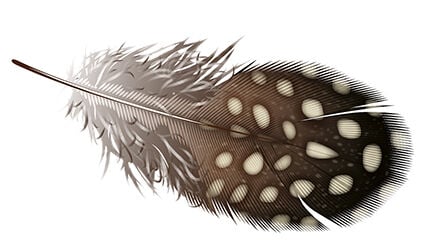
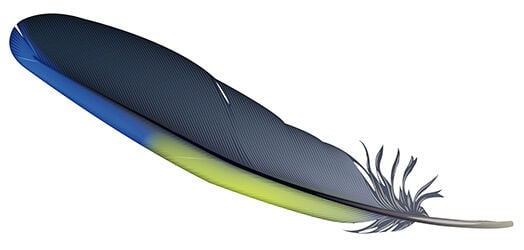
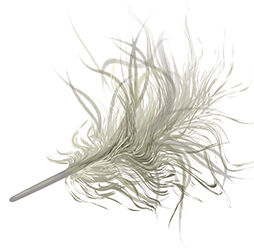
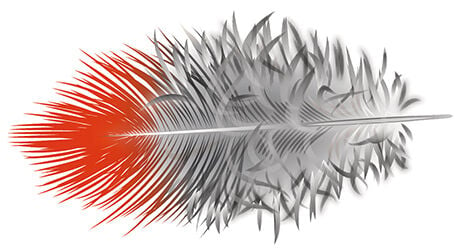
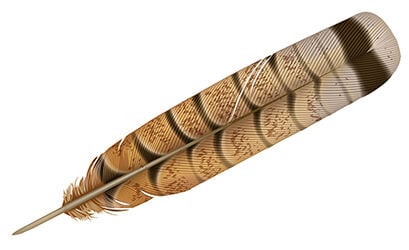
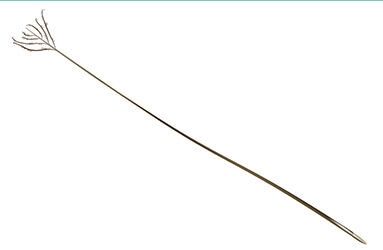

(0) comments
Welcome to the discussion.
Log In
We aim to provide a forum for fair and open dialogue.
Please use language that is accurate and respectful.
Comments may not include:
* Insults, verbal attacks or degrading statements
* Explicit or vulgar language
* Information that violates a person's right to privacy
* Advertising or solicitations
* Misrepresentation of your identity or affiliation
* Incorrect, fraudulent or misleading content
* Spam or comments that do not pertain to the posted article
We reserve the right to edit or decline comments that do follow these guidelines.